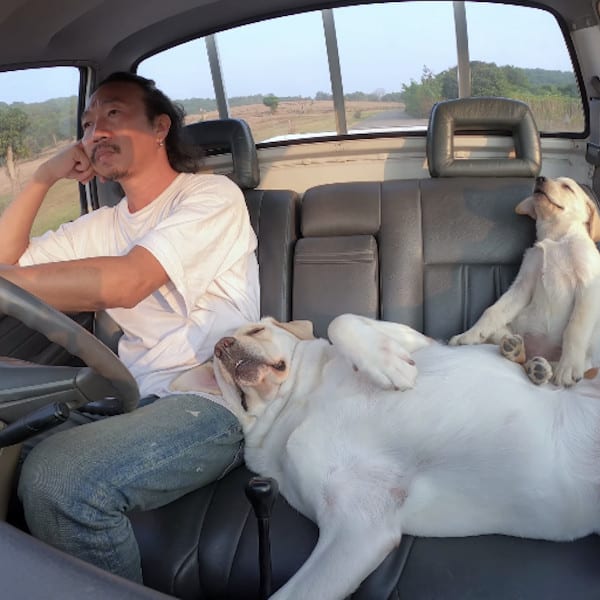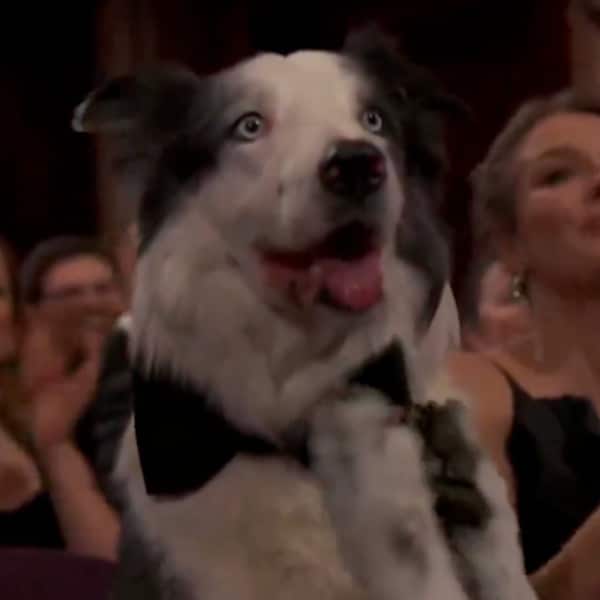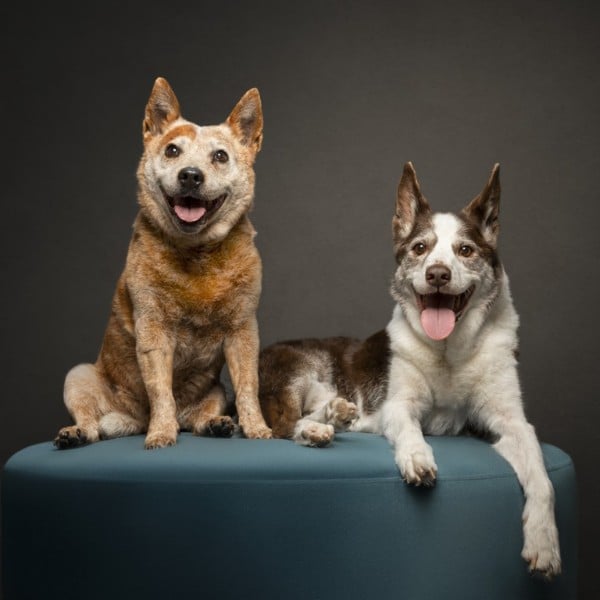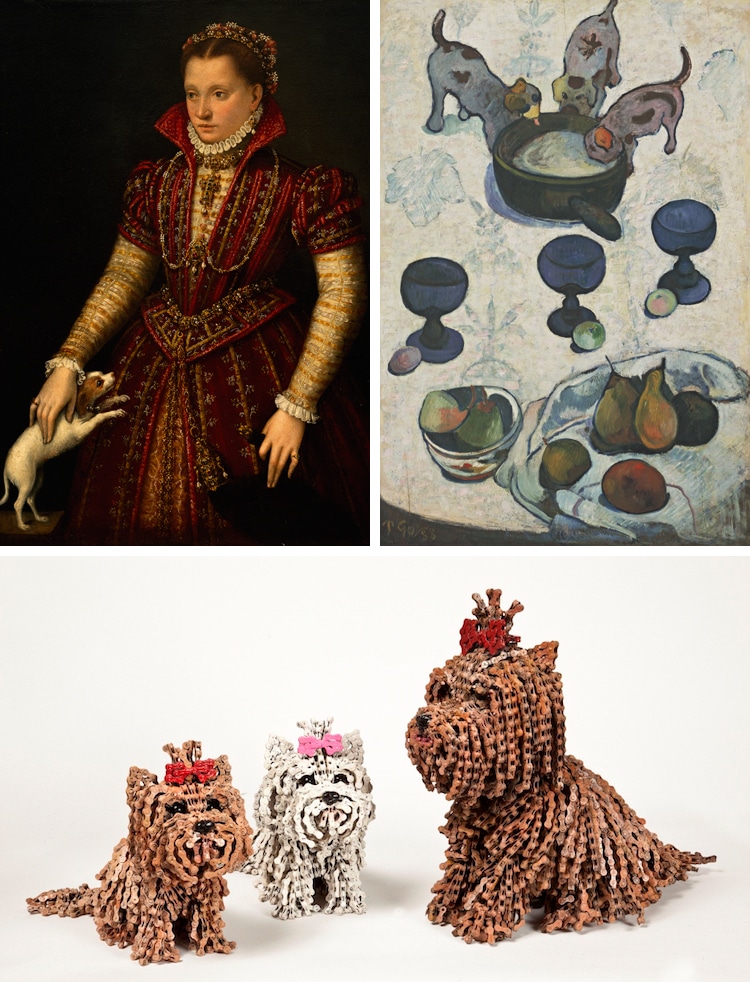
Our four-legged friends are often the muses for art of all kinds. Of these creatures, dogs are one of the most popular subjects for painting, sculpture, and photography. Throughout art history, they’ve made appearances with members of the aristocracy, self-portraits with famous creatives, and been immortalized as balloons—and that’s just a small fraction of the dog art that exists between the past and today. Canines are living symbols of protection, loyalty, and unconditional love, so it’s easy to see why they’ve been such a long and colorful part of our visual history.
Dogs in Art History
For thousands of years, artists have shown their admiration and respect for canines by painting and carving their likenesses. They even show up in ancient art. In Pompeii, a dog mosaic was found in the House of the Tragic Poet. The structure was built in its current form near the end of the first century BC, meaning that this artwork of a fierce canine had been around for at least as long. The words at the bottom, Cave Canem, translate to “beware of the dog.” Despite that warning, it’s believed that this was to alert a visitor that there were dogs present in the house.
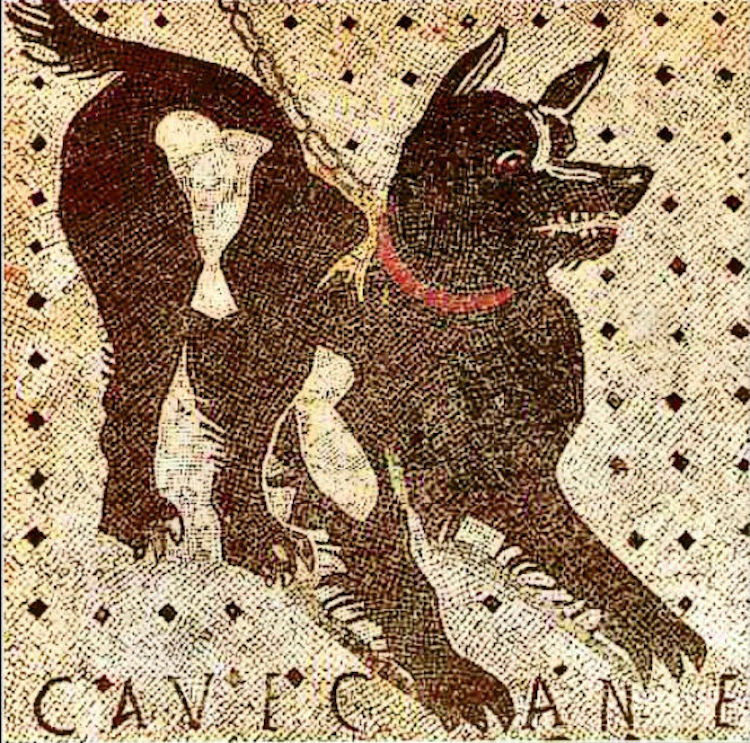
“Cave Canem” at House of the Tragic Poet
Dog art was also found in the first century AD. One charming example includes a pair of canines found near Civita Lavinia, Italy in 1774. A painter and art dealer named Gavin Hamilton had excavated a place aptly-named Dog Mountain and discovered, among other things, a marble portrait of two hounds. According to The British Museum, it’s not possible to date these sculptures, but they were produced sometime between 1 AD to 199 AD.
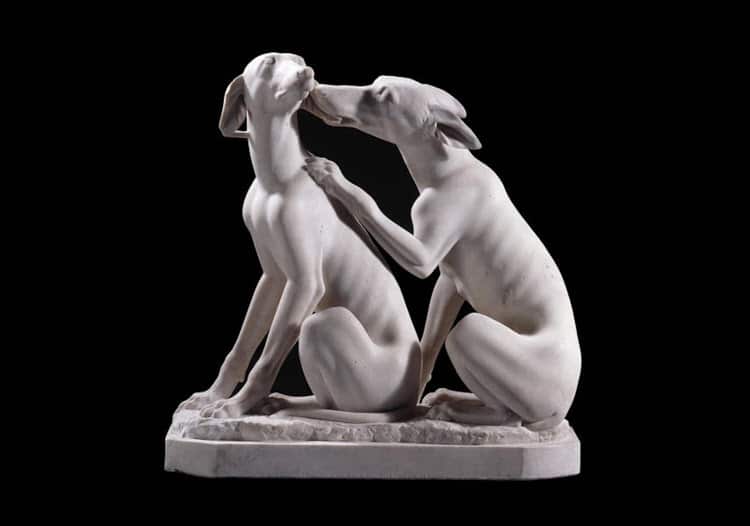
Marble statue of a pair of dogs, 1 AD – 199 AD. (Photo: The British Museum)
Dogs are known for their companionship, and it’s a trait that’s well documented in art from the Renaissance. Royalty and other upper-classmen had their portraits immortalized through painting, and many include a dog at their side (or on their lap). Portrait of a Noblewoman painted by Lavinia Fontana around 1580 depicts a young Bolognese noblewoman who just got married. Clad in rich textiles and exquisite jewels, the dark background and deep red dress makes her tiny dog the stand out of this piece.
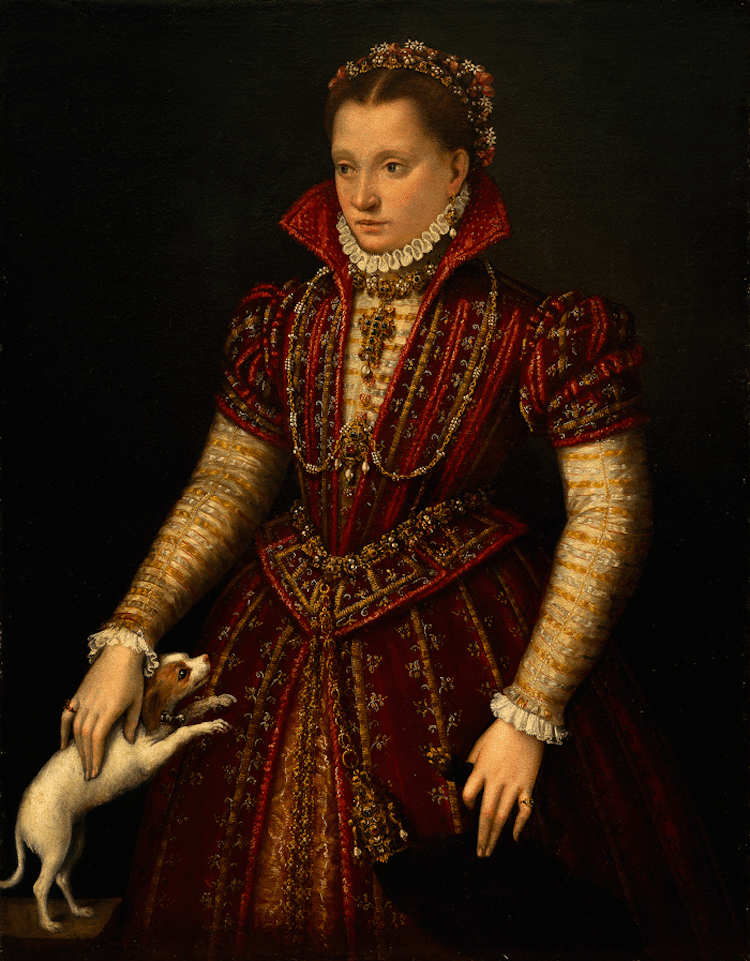
“Portrait of a Noblewoman” by Lavinia Fontana, ca. 1580. (Photo: National Museum of Women in the Arts)
While many pups got to pose for regal portraits, the Renaissance also depicted dogs at work. Pieter Bruegel the Elder famously captured this in his iconic painting, Hunters in the Snow. The piece features two men who are followed by their pack of loyal dogs. Although the hunters are the intended focus of the piece, it’s the canines who convey the most emotion. Having just returned from an unsuccessful hunt, they appear unhappy with their heads in shame.
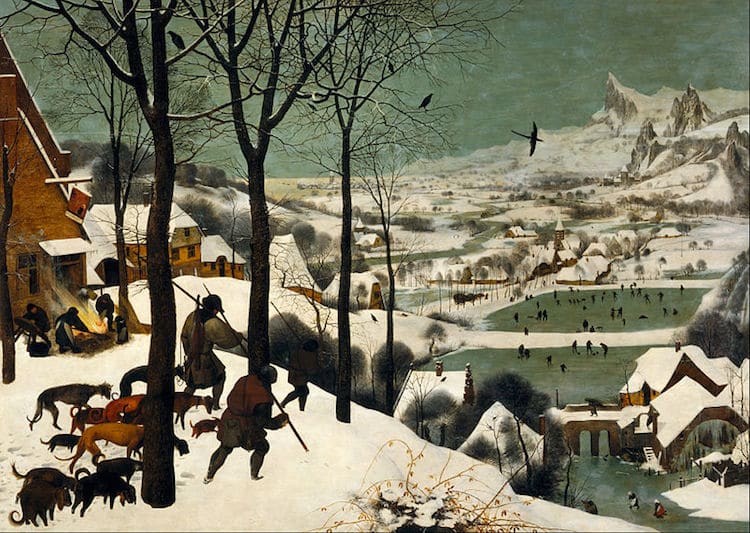
“The Hunters in the Snow” by Pieter Bruegel the Elder, 1565. (Photo: Kunsthistorisches Museum)
Beyond the Renaissance and during the 18th century, dog breeds became standardized. This lead to dog portraits, where the animals were the stars of the piece. Still life paintings are a long-standing tradition in art, and Paul Gauguin puts a twist on this with his 1888 piece called Still Life with Three Puppies. A departure from naturalistic depiction, the painting is said to be inspired by Japanese prints and children’s book illustrations.
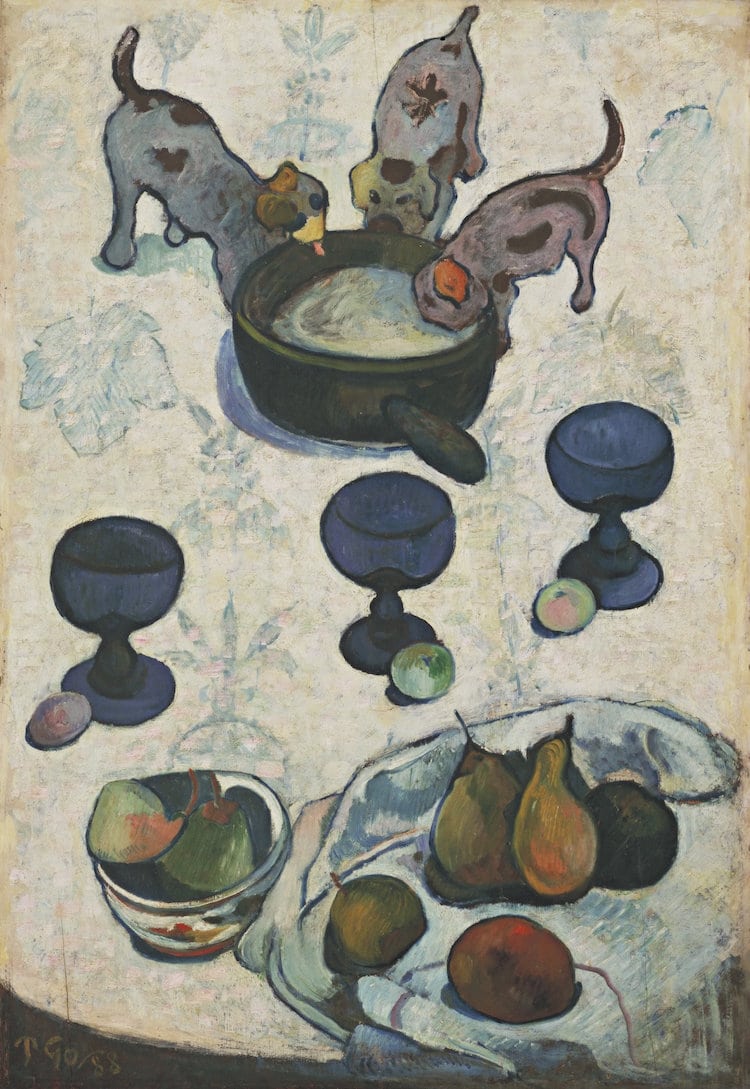
“Still Life with Three Puppies” by Paul Gauguin, 1888. (Photo: MoMA)
Shortly after Gauguin's piece surfaced, one of the most well-known collection of paintings, prominently featuring dogs, came to be—Dogs Playing Poker. This iconic series by American painter Cassius Marcellus Coolidge began with Poker Game in 1894, which then led to a set of 16 oil paintings commissioned for a cigar ad campaign in 1903, and a final painting completed in 1910. They each feature a group of dogs playing a game of poker. Collectively, these paintings became incredibly well-known in the United States, and have continued to pop up for decades in contemporary culture. It cemented dogs as viable art subjects in the modern era.
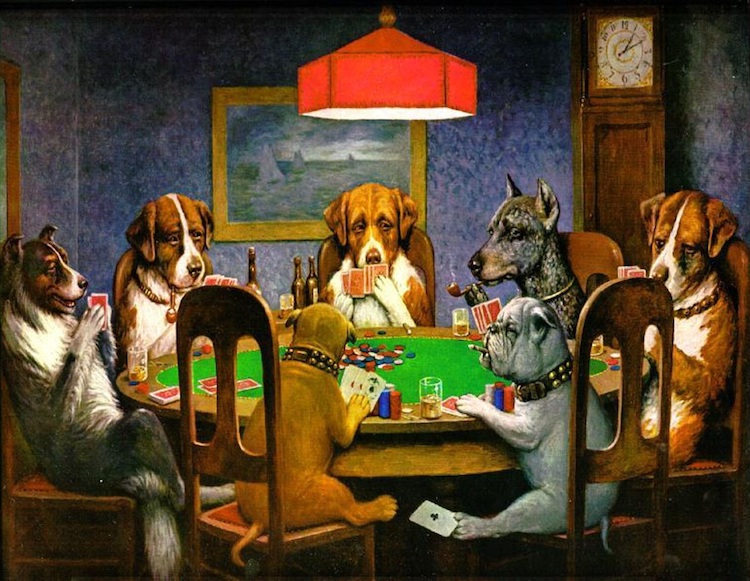
“A Friend in Need” from the “Dogs Playing Poker” series by Cassius Marcellus Coolidge, 1903
This shift from sidekick to star has lead to a variety of dog art, from realism to abstraction. When it comes to contemporary works, Jeff Koons has created some of the most famous dog art of all. His larger-than-life Balloon Dog sculptures continue to be a hit and have inspired home decor. In addition to that iconic pop art, he also created Puppy in 1995. Standing nearly 41 feet tall, the giant sculpture is a flowering representation of a pup—literally. It’s still on view at its permanent home at the Guggenheim Museum in Bilbao.
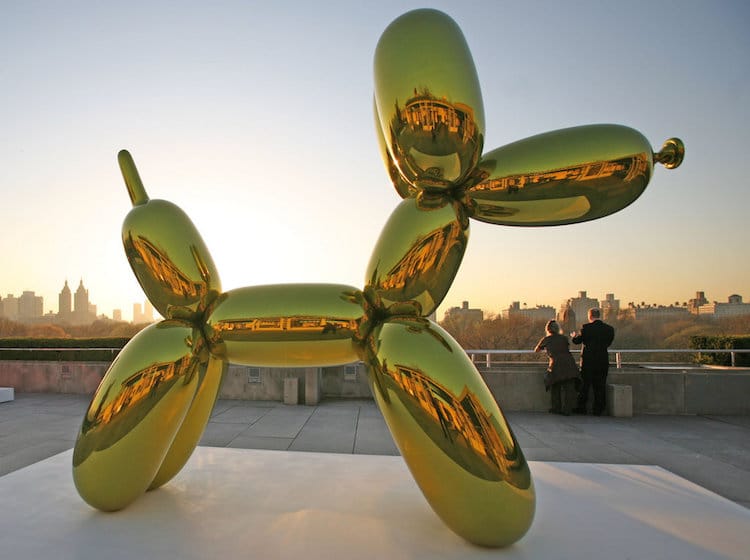
“Balloon Dog” by Jeff Koons. (Photo: Librado Romero)
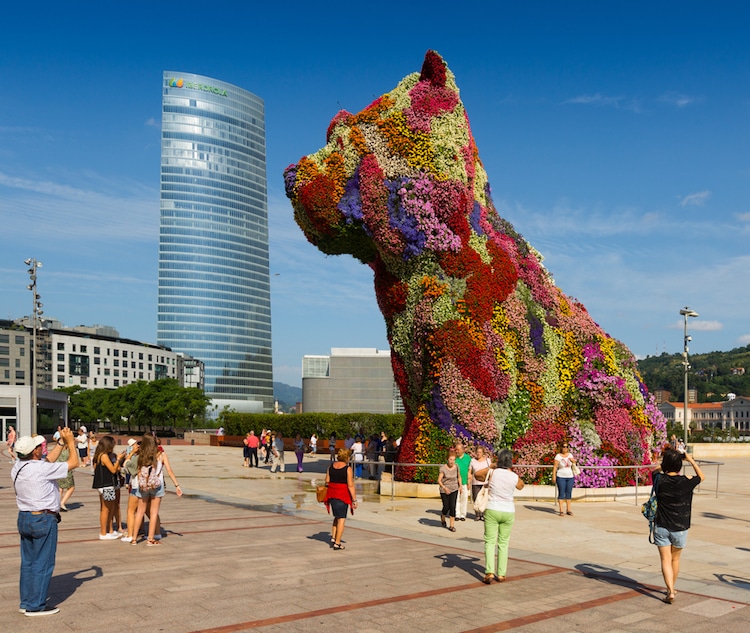
“Puppy” by Jeff Koons, 1995. (Photo: Iakov Filimonov / Shutterstock.com)











































































